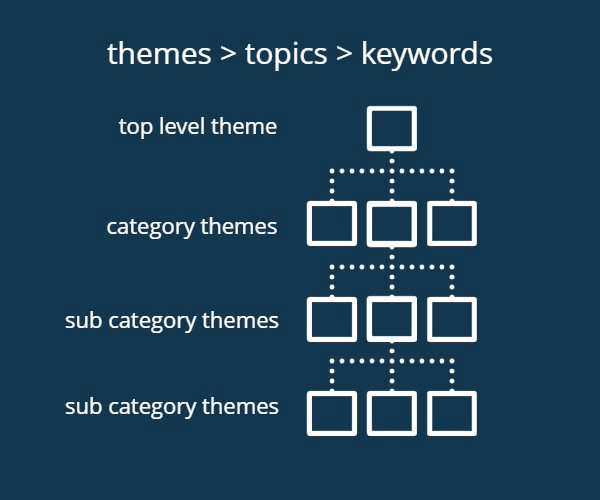Keyword Search Volume: Understand Query Search Demand in 2 Minutes

Keyword Search Volume
The purpose of Keyword Search Volume is to determine the search demand for a query. A term can appear in several search queries, each with its own set of word boundaries, lemmas, and stems. In questions with varying search demands, alternative phrase meanings, word combinations, contexts, and word-sense groups are used. In this context, search engine optimization specialists concentrate on high-demand search queries. If there are few results for a popular search query, it suggests that ranking for that query is easier than for others. The search engine result pages are included in the query-results. Every query result contains a portion of the question as strings or as a logical match. Query semantics focuses on query comprehension and grouping with contextual search behaviors. The query-related information and metrics are prominent in order to provide a correct SEO focus.
Also Read:- How To Create Semantic Content Network? Ranking Websites on Google
Search engines must deal with various complexity such as query templates, query phrasing, query processing, parsing, and rewriting. Understanding questions and connecting possible search activities became easier with the introduction of semantic search engines. A semantic search engine represents the ability to grasp the context of words and sentences in order to rewrite the context with augmentation. Context sensitive ranking and query demand are linked because as query search demand increases, so does contextual variety. The context sensitive ranking offers various situations for a phrase to appropriately rank it. Contextual search engines use several approaches to process queries.
comprehending the search engine is important for comprehending the term search volume value. The value of keyword search volume is represented in search engine optimization technologies and tools such as SEMrush and others. More questions in the query database with more accurate query search demand means improved accuracy and priority for potential search improvement projects.
Query demand has four major effects. Search engine result page characteristics, search result count, search result dimension diversity, content freshness, and content detail amount all interact with keyword search volume. The prominence of a specific query in the query network is affected by search demand or keyword search volume. A seed query is the query cluster’s focal point. A query can be either a seed or a represented query. If a document meets the need underlying the query, or the search intent, it is useful to further network inquiries. A document must incorporate the seed query into the Information Retrieval flow of the text and images. Because it is more difficult to target the rest of the query network without exceeding the relevance threshold of the specific seed query. The query networks are made up of search demand and query popularity.
Keyword Search Volume in a Nutshell:
1. What is it? Keyword search volume refers to the number of times a specific keyword or phrase is searched for in search engines over a given period, usually a month.
2. Why is it Important?
- Content Creation: Helps you understand what topics are in demand, so you can create content that people are actively searching for.
- SEO: High search volume keywords can drive more traffic, but they’re often more competitive.
- PPC Campaigns: If you’re running ads, you’ll want to bid on keywords that have a decent search volume to maximize visibility.
3. Tools to Check Search Volume:
- Google Keyword Planner: Free tool by Google. Originally for AdWords users, but also provides search volume data.
- SEMrush, Ahrefs, Moz: Paid tools that offer detailed keyword data, including search volume, competition, and more.
- Ubersuggest: A freemium tool that provides keyword ideas along with search volume.
4. Things to Remember:
- Seasonality: Some keywords might have high search volumes during specific times of the year (e.g., “Christmas gifts” in December).
- Long-tail Keywords: These are longer, more specific keywords. They might have lower search volumes but can be less competitive and more targeted.
- Relevance: High search volume doesn’t always mean it’s a good keyword for you. It should be relevant to your content or business.
5. Quick Tip: When researching, look for a balance between search volume and competition. High search volume with low competition is the sweet spot, but it’s rare. Often, targeting a mix of high-volume and long-tail keywords works best.
The query search requirement is interpreted differently by entity-oriented search. A query can have two distinct entities and five distinct contexts. Even if the sentences are the same, the real-world existences are not. Thus, even if there is query search demand or keyword search volume, the specific keyword has at least ten alternative queries and query definitions.
The entity-oriented search should be used to understand search demand. The keyword cannibalization changes as a result of various search result providing strategies such as “intended results” or keyword definitions. To comprehend query definitions and elements, different search intentions are prominent. The query component represents the query’s focus for a given topic, whereas the query definition is the phrasing of the search intent. Google releases research papers and patents in order to better comprehend web search engine users’ queries. A query understanding methodology is essential for determining the value of a certain query and various search trends.
Keyword search volume is a fundamental notion in search engine optimization. Understanding and prioritizing search demand entails focusing on more search engine users and possibly more retained visits for the website.








